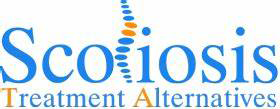Scoliosis Pain Management with Pharmaceuticals & Injections
While most adolescent patients with scoliosis have no pain related to their scoliosis many adults do. Statistic show that up to 40% of adults with scoliosis have related pain and the percentage having pain with advancing scoliosis are undoubtedly even higher.
Usually, the scoliosis itself does not cause pain. It is most often the secondary degenerative changes in the body that develop as a result of the postural changes that cause chronic pain.
Because of this conventional medical treatment often recommends seeing a Pain Management Specialist to oversee the prescribed medications when other more conservative solutions such as exercise, physical therapy and chiropractic no longer work.
A Pain Management Specialist is a medical doctor with specialized training in managing pharmaceuticals for chronic pain. They also provide other treatment such as TENS units, trigger point injections, intra-articular joint injections, cortisone injections, nerve blocks, epidural injections, implanted drug delivery systems and even spinal cord stimulators. This extra training is necessary since prescribing heavy duty pain medications for long term use can itself result in addiction and adverse pain behaviors that must be monitored closely.
Here is a list of complications that can take place as a result of some of the types of pain management tools used today to treat scoliosis related symptoms.(1)
For a more comprehensive list or the specific risks and side effects from any Pain Management Technique, ask your doctor.
Over the Counter Medications (OTC’s)
Long term use of non-steroidal anti-inflammatory drugs (NSAIDS) for scoliosis pain management are thought to be relatively safe to use and can often be obtained over the counter in lower dosages but even these medications have the potential risks of reduced kidney function, increased bleeding times due to inhibition of platelet aggregation, impairment of healing of intestinal anastomoses, increased asthmatic episodes in susceptible patients, increased GI complications, increased GI mucosal lesions that can aggravate a pre-existing ulcer resulting in a bleeding ulcer.
Acetaminophen in large doses or chronic use of smaller does can cause severe liver damage and death.
Prescription Pain Medications
Pain medications are often prescribed for adult scoliosis patients to mask their symptoms. Complications that can occur from long term use of prescription pain medications are addiction, tissue toxicity or systemic toxicity that causes central nervous system or cardiovascular problems such as sedation, constipation, nausea and vomiting, dry mouth, sleep disturbances, hallucinations, mood changes and respiratory depression that has the potential to even cause death.
Local Anesthetics and Corticosteroids
Local anesthetics or corticosteroids are increasingly being recommended as an alternative in the form of trigger point injections or intra-articular injections. Potential complications of using local anesthetics for pain relief can result in unintended anesthesia of nearby sensory or motor nerves.
The complications of corticosteroid treatment may include temporary hypertension, hyperglycemia, gastrointestinal bleeds, glaucoma, alkalosis, mood disorders, psychic reactions, pancreatic, proximal myopathy and water retention. The long term effects include amenorrhea, aseptic necrosis of bone, cataracts, hyperlipidemia, hypertension, muscle weakness and osteoporosis.
Pain Injections
The physical risks of injections from pain management range from soft tissue swelling at the site of injection, cellulites, abscess formation, nerve damage, vascular injury, puncture of the dura surrounding central nervous system causing leakage of cerebral spinal fluid causing severe headaches, pulmonary complications such as pneumothorax causing respiratory compromise and on rare occasions organ puncture, With the use of neurolytic agents there is a risk of local loss of sensation, motor function loss locally, low of bowel or bladder function and even death.
All of these scoliosis Pain Management Techniques are designed for blocking of pain sensation for the part of the body that is under strain and causing either degenerative changes or nerve irritation. None of these treatments are designed to correct the underlying cause of the pain, which is the progressive postural disorganization causing abnormal spinal loading.
(1) http://www.helpforpain.com/articles/complications/complications.htm
Rather than trying to mask the symptoms with medications, our doctors provide our adult scoliosis treatment that look to correct the cause of the pain related to the scoliosis, which is often secondary to postural off loading. Once the postural changes have been reduced then the symptoms will resolve on their own.
Because of this, the vast majority of our adult patients get relief from their scoliosis symptoms with our treatment programs.
